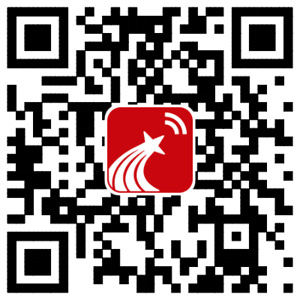限定内容
主题
- 35,073 篇 细胞因子
- 24,284 篇 单克隆抗体
- 17,510 篇 淋巴细胞
- 15,716 篇 抗原
- 13,748 篇 免疫球蛋白
- 10,284 篇 hla
- 10,254 篇 il-6
- 9,974 篇 t淋巴细胞
- 8,311 篇 细胞免疫
- 7,747 篇 tnf
- 7,703 篇 inflammation
- 7,456 篇 tnf-α
- 7,451 篇 肿瘤坏死因子-α
- 7,160 篇 cytokines
- 6,093 篇 儿童
- 5,368 篇 mhc
- 5,138 篇 肿瘤坏死因子
- 5,087 篇 人类
- 5,026 篇 抗体
- 4,966 篇 预后
机构
- 2,653 篇 中国医科大学
- 2,646 篇 第四军医大学
- 2,517 篇 吉林大学
- 2,220 篇 华中科技大学
- 2,006 篇 安徽医科大学
- 1,927 篇 苏州大学
- 1,920 篇 河北医科大学
- 1,844 篇 山西医科大学
- 1,795 篇 山东大学
- 1,746 篇 重庆医科大学
- 1,711 篇 第三军医大学
- 1,626 篇 浙江大学
- 1,502 篇 中山大学
- 1,482 篇 南方医科大学
- 1,455 篇 复旦大学
- 1,405 篇 第二军医大学
- 1,405 篇 郑州大学
- 1,363 篇 天津医科大学
- 1,353 篇 解放军总医院
- 1,308 篇 扬州大学
文献订阅
- 维持性血液透析并发抑郁患者中性粒细胞/淋巴细胞比值和血小板/淋巴细胞比值变化及价值分析
- 鄂州市中心医院检验科 鄂州436000鄂州市中心医院骨科 鄂州436000鄂州市中心医院肾病内科 鄂州436000鄂州市中心医院神经内科 鄂州436000鄂州市中心医院麻醉科 鄂州436000
-
来源
 维普期刊数据库
维普期刊数据库
 万方期刊
万方期刊
 中国学术期刊网络出版...
详细信息
中国学术期刊网络出版...
详细信息
- 重症肺炎支原体肺炎患儿血清IL-6、D-二聚体水平的临床意义
- 广州医科大学附属清远医院(清远市人民医院)儿内科 广东清远511500广州医科大学第六临床学院 广东清远511500广州医科大学第二临床学院 广东广州511436
-
来源
 维普期刊数据库
维普期刊数据库
 中国学术期刊网络出版...
详细信息
中国学术期刊网络出版...
详细信息
- 身痛逐瘀汤对强直性脊柱炎模型小鼠外周血CD62P及IL-1β表达的影响
- 天津中医药大学 天津301617天津中医药大学第二附属医院 天津300250
-
来源
 维普期刊数据库
维普期刊数据库
 万方期刊
万方期刊
 中国学术期刊网络出版...
中国学术期刊网络出版...
 中国学术期刊网络出版...
更多
详细信息
中国学术期刊网络出版...
更多
详细信息
- 电针调控ILC3s/IL-22通路改善炎症性肠病小鼠结肠损伤的机制研究
- 中国中医科学院针灸研究所 北京100700
-
来源
 维普期刊数据库
维普期刊数据库
 中国学术期刊网络出版...
中国学术期刊网络出版...
 中国学术期刊网络出版...
详细信息
中国学术期刊网络出版...
详细信息
- Immunometabolic reprogramming in the management of prurigo nodularis with methotrexate
- Department of Dermatology University of Maryland School of Medicine Baltimore MarylandMaryland Itch Center University of Maryland School of Medicine Baltimore MarylandDepartment of Anesthesiology Duke University School of Medicine Durham North Carolina
- 来源 PubMed期刊 详细信息
- Serum levels of GDF-15, betatrophin, TNF-α and IL-6 in diabetic patients with and without diabetic complications
- Dicle Univ Sch Med Dept Family Med Diyarbakir TurkiyeHaci Bektas Veli Univ Fac Arts & Sci Dept Mol Biol & Genet Nevsehir TurkiyeFirat Univ Sch Med Dept Family Med Elazig TurkiyeFirat Univ Sch Med Dept Internal Med Elazig Turkiye
- 来源 ScienceCitationIndex... PubMed期刊 详细信息
- 难治性肺炎支原体肺炎患儿外周血miR-1323/IL-6炎性轴改变情况及其与预后不良风险的相关性分析
- 廊坊市妇幼保健院儿科 河北廊坊065000首都儿科研究所廊坊市儿童医院儿科 河北廊坊065000
-
来源
 维普期刊数据库
维普期刊数据库
 万方期刊
万方期刊
 中国学术期刊网络出版...
详细信息
中国学术期刊网络出版...
详细信息
- 血清IL-6、IL-8、TREM1、uPAR和presepsin在脓毒症休克患者中的诊断价值
- 海口市中医医院重症医学科 海南海口570216海口市中医医院心病科 海南海口570216
-
来源
 维普期刊数据库
维普期刊数据库
 中国学术期刊网络出版...
中国学术期刊网络出版...
 万方期刊
万方期刊
 中国学术期刊网络出版...
更多
详细信息
中国学术期刊网络出版...
更多
详细信息
- 急性淋巴细胞白血病移植后髓外复发2例报道及文献复习
- 中国人民解放军联勤保障部队第九四〇医院血液科 兰州730050南方医科大学顺德医院血液科 广东佛山528000
-
来源
 维普期刊数据库
维普期刊数据库
 中国学术期刊网络出版...
详细信息
中国学术期刊网络出版...
详细信息
- 嵌合抗原受体T细胞疗法护理相关热点的可视化分析
- 华中科技大学同济医学院附属同济医院.血液内科 湖北武汉430030华中科技大学同济医学院附属同济医院内科 湖北武汉430030
-
来源
 维普期刊数据库
维普期刊数据库
 中国学术期刊网络出版...
详细信息
中国学术期刊网络出版...
详细信息

